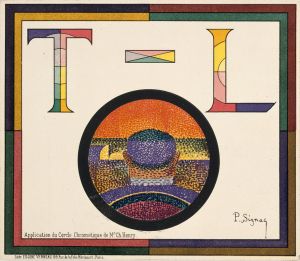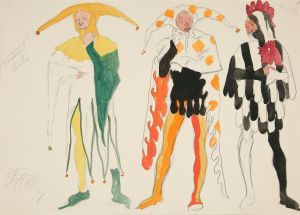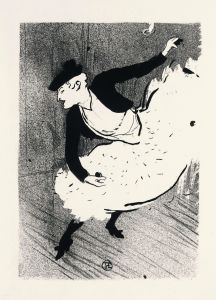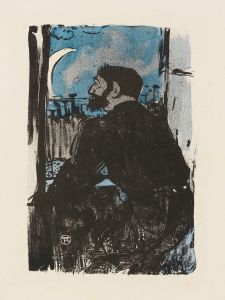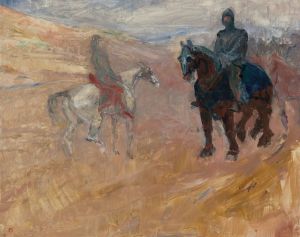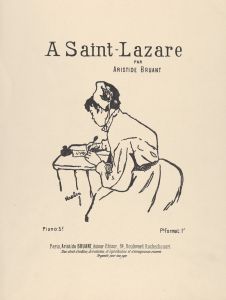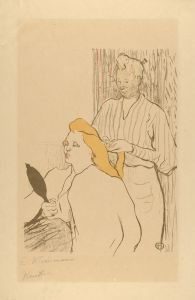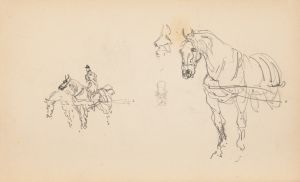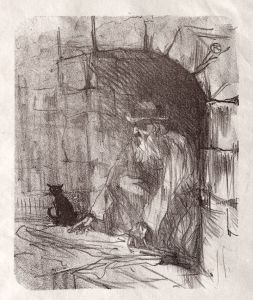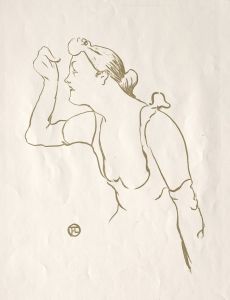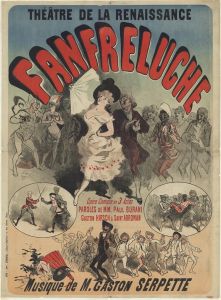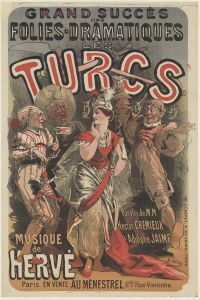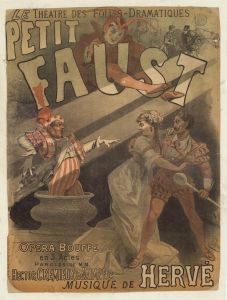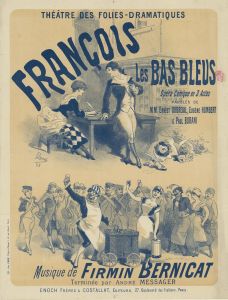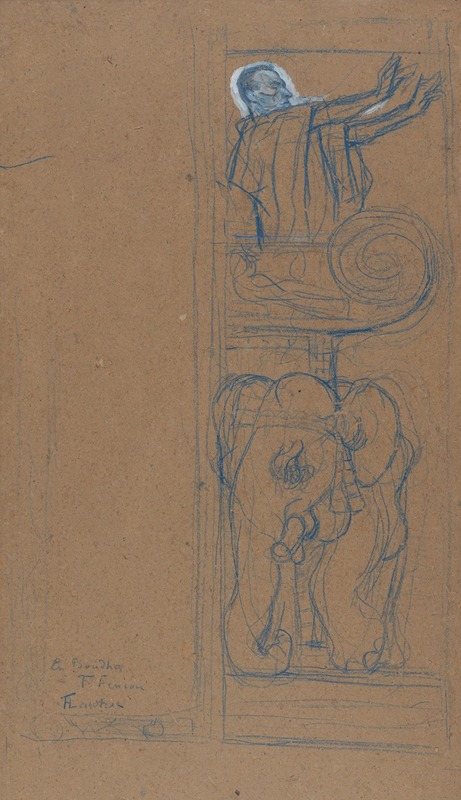
Preliminary Design for the Playbill to ‘Le Chariot de Terre Cuite’
A hand-painted replica of Henri de Toulouse-Lautrec’s masterpiece Preliminary Design for the Playbill to ‘Le Chariot de Terre Cuite’, meticulously crafted by professional artists to capture the true essence of the original. Each piece is created with museum-quality canvas and rare mineral pigments, carefully painted by experienced artists with delicate brushstrokes and rich, layered colors to perfectly recreate the texture of the original artwork. Unlike machine-printed reproductions, this hand-painted version brings the painting to life, infused with the artist’s emotions and skill in every stroke. Whether for personal collection or home decoration, it instantly elevates the artistic atmosphere of any space.
Henri de Toulouse-Lautrec, a prominent French painter and illustrator of the late 19th century, created the artwork titled Preliminary Design for the Playbill to ‘Le Chariot de Terre Cuite’. This piece was a preparatory design for a theatrical playbill associated with the production of Le Chariot de Terre Cuite (translated as The Clay Cart), a play originally written by the ancient Indian playwright Śūdraka. The play is a classical Sanskrit drama that dates back to approximately the 2nd century CE and was later adapted for French audiences during the late 19th century.
Toulouse-Lautrec was well-known for his innovative contributions to poster art and his ability to capture the essence of Parisian nightlife, theater, and entertainment culture. His work often featured bold lines, striking compositions, and a keen sense of character and movement. This particular design reflects his engagement with the theatrical world and his collaboration with the performing arts scene in Paris.
The preliminary design showcases Lautrec's characteristic style of sketching and planning, with an emphasis on the interplay of figures and text that would later define the final playbill. While the exact details of the design may vary depending on the specific version or reproduction, it is consistent with Lautrec's broader body of work, which often included promotional materials for plays, cabarets, and other performances.
The play Le Chariot de Terre Cuite was part of a broader European interest in Asian art and culture during the 19th century, a period when Orientalism influenced various artistic and literary movements. Toulouse-Lautrec's involvement in creating a design for this playbill highlights his versatility as an artist and his ability to adapt his style to different cultural and thematic contexts.
This artwork is an example of Lautrec's preparatory process, offering insight into how he conceptualized and developed his designs. It also underscores his connection to the theatrical world, where he frequently collaborated with performers, directors, and producers to create visually compelling promotional materials.
As with many of Toulouse-Lautrec's works, this design is valued not only for its artistic merit but also for its historical significance, providing a glimpse into the cultural and artistic milieu of late 19th-century Paris.





